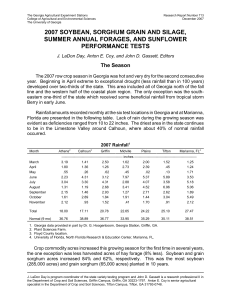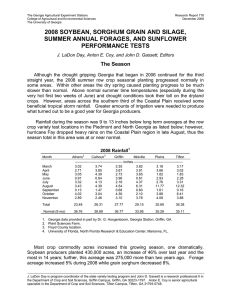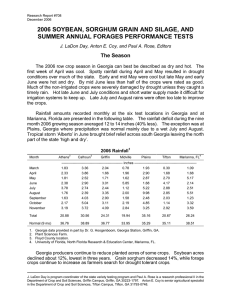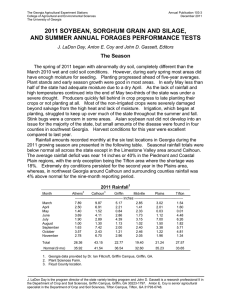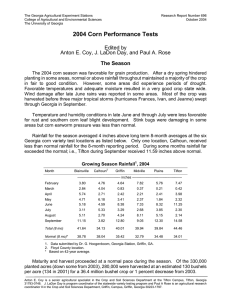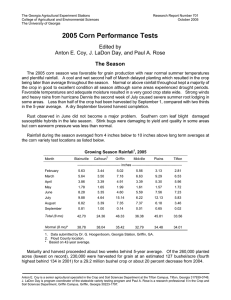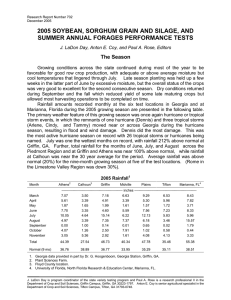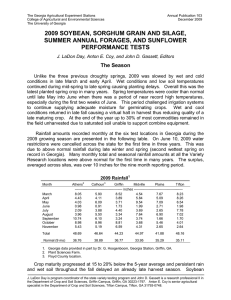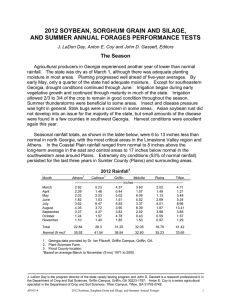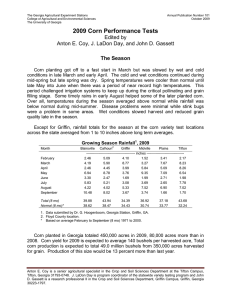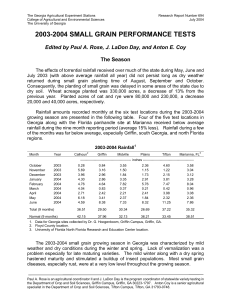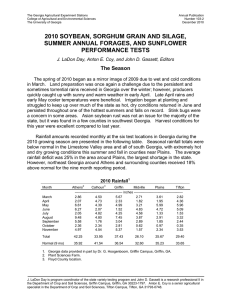The Georgia Agricultural Experiment Stations Research Report Number 697
advertisement
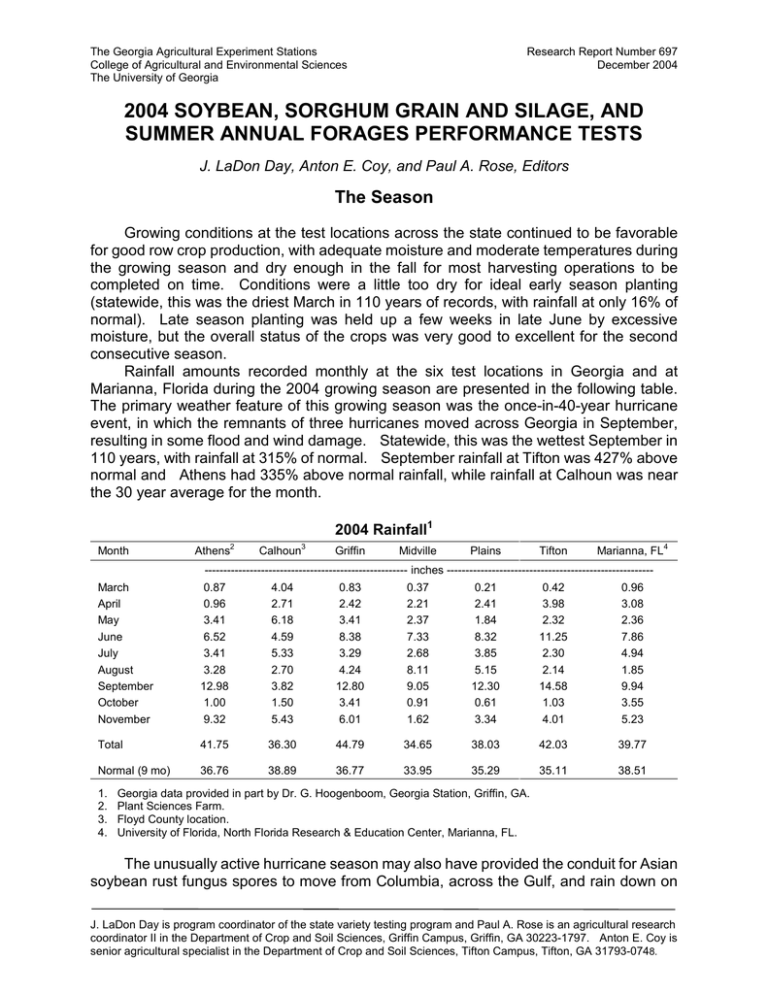
The Georgia Agricultural Experiment Stations College of Agricultural and Environmental Sciences The University of Georgia Research Report Number 697 December 2004 2004 SOYBEAN, SORGHUM GRAIN AND SILAGE, AND SUMMER ANNUAL FORAGES PERFORMANCE TESTS J. LaDon Day, Anton E. Coy, and Paul A. Rose, Editors The Season Growing conditions at the test locations across the state continued to be favorable for good row crop production, with adequate moisture and moderate temperatures during the growing season and dry enough in the fall for most harvesting operations to be completed on time. Conditions were a little too dry for ideal early season planting (statewide, this was the driest March in 110 years of records, with rainfall at only 16% of normal). Late season planting was held up a few weeks in late June by excessive moisture, but the overall status of the crops was very good to excellent for the second consecutive season. Rainfall amounts recorded monthly at the six test locations in Georgia and at Marianna, Florida during the 2004 growing season are presented in the following table. The primary weather feature of this growing season was the once-in-40-year hurricane event, in which the remnants of three hurricanes moved across Georgia in September, resulting in some flood and wind damage. Statewide, this was the wettest September in 110 years, with rainfall at 315% of normal. September rainfall at Tifton was 427% above normal and Athens had 335% above normal rainfall, while rainfall at Calhoun was near the 30 year average for the month. 2004 Rainfall1 Month 2 Athens Calhoun 3 Griffin Midville Plains Tifton Marianna, FL 4 ------------------------------------------------------ inches ------------------------------------------------------March April May June July August September October November 0.87 0.96 3.41 6.52 3.41 3.28 12.98 1.00 9.32 4.04 2.71 6.18 4.59 5.33 2.70 3.82 1.50 5.43 0.83 2.42 3.41 8.38 3.29 4.24 12.80 3.41 6.01 0.37 2.21 2.37 7.33 2.68 8.11 9.05 0.91 1.62 0.21 2.41 1.84 8.32 3.85 5.15 12.30 0.61 3.34 0.42 3.98 2.32 11.25 2.30 2.14 14.58 1.03 4.01 0.96 3.08 2.36 7.86 4.94 1.85 9.94 3.55 5.23 Total 41.75 36.30 44.79 34.65 38.03 42.03 39.77 Normal (9 mo) 36.76 38.89 36.77 33.95 35.29 35.11 38.51 1. 2. 3. 4. Georgia data provided in part by Dr. G. Hoogenboom, Georgia Station, Griffin, GA. Plant Sciences Farm. Floyd County location. University of Florida, North Florida Research & Education Center, Marianna, FL. The unusually active hurricane season may also have provided the conduit for Asian soybean rust fungus spores to move from Columbia, across the Gulf, and rain down on J. LaDon Day is program coordinator of the state variety testing program and Paul A. Rose is an agricultural research coordinator II in the Department of Crop and Soil Sciences, Griffin Campus, Griffin, GA 30223-1797. Anton E. Coy is senior agricultural specialist in the Department of Crop and Soil Sciences, Tifton Campus, Tifton, GA 31793-0748. the southern United States. Soybean rust was first detected in the continental United States on November 9, 2004 in Louisiana and was confirmed on soybean leaf samples in Georgia and kudzu leaf samples in Florida on November 19th. Take every opportunity this winter to familiarize yourself with the symptoms of rust and be prepared to monitor soybean fields throughout the coming growing season. Georgia soybean acreage increased for the second consecutive year, an increase of 44% from last year's acreage. Although state per acre yields were not quite as good as last year's record, the state bushel production was up 31% over 2003. Sorghum grain acreage as well as sorghum for silage and forage acreage decreased 22% from 2003 to the lowest acreage planted to sorghum in the state since 1969.
